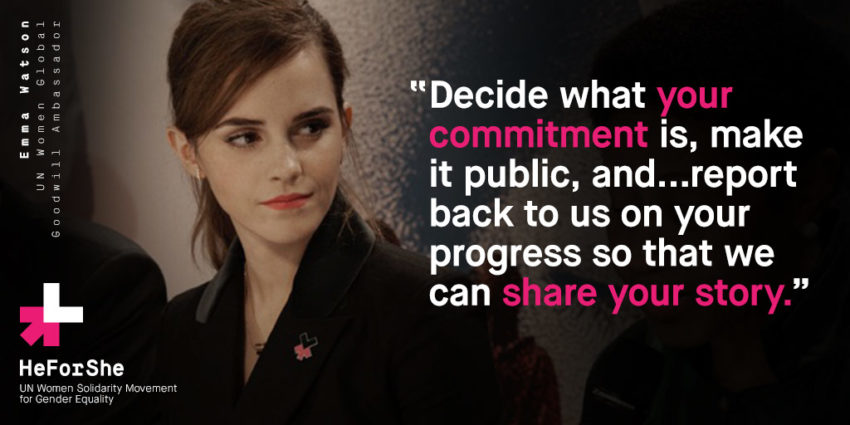I
The Bane of Gender Identity Since the beginning of history, almost all conflicts and issues that the humankind has had the misfortune of witnessing have their roots in identity politics. There have been great wars to establish the dominance of one national identity over another. There have been riots, bloody and ruthless, between different, conflicting religious identities. There have been fights for equal opportunities between unequal class and caste identities.
The women, on similar lines, have faced an entire set of concerns specific to their gender identity. Identities overlap and need to be prioritised over one another. Which issue bothers one the most depends on whether one identifies oneself as an Indian first or as a Hindu, as a male or as a Hindu upper cast male? Women, then, face the same issues with different magnitudes depending upon their supplementary sources of identity.
For example, an upper caste woman will find herself placed higher in the social hierarchy, defined by power relations, than a lower caste man. However, that said, one cannot neglect the problems surrounding the “weaker sex” as a whole. Everything, from emotions to occupation, is gender labelled by the society. A man in the nursing profession is a shocker and a strong headed woman with a sharp tongue an exception. Everything feminine is very matter-of-factly placed inferior to everything masculine.
This gender compartmentalization is not just challenging for women but for men as well who are under constant societal pressure to prove their “manliness”.
II
The Public, the Private Moving ahead with the “burden of femininity” is challenging for women on more than one level. Gender discrimination begins within the household with families condemning the birth of a girl child, leading to the increasing levels of sex selective abortions and female infanticide.
Discrimination continues to result in dismally low levels of female literacy with parents either confining the role of woman to within the household and hence perceiving education to be fruitless, or being sceptical of letting their girl venture outside due to safety concerns.
Hence, before entering the public sphere, historically thought to be rightly suited only for the men community, women struggle with social constructions which work towards confining them to the realm of the private and not allow access to education, gained via both schooling and lived experiences. The reality today is such that the distinction between the public and private is disappearing into a blur.
Women in every sphere need to fight to preserve their autonomy and establish their individuality. A women’s identity is always described in relation to a man’s. This is the primary reason why feminists had to struggle over issues such as women’s property and inheritance rights. Issues surrounding the bodily autonomy of women are vast not only in number but also in complexity.
Dwelling into the rural parts of India will reveal how women are absolutely bereft of any reproductive rights. Coupled with poverty, hunger and homelessness is the absence of minimal accommodations for pregnant women.
The scenario in the urban India is similarly crippled with matters such as lack of paid maternity leave benefits and affordable and competent child care for single or working mothers. A hot debate in this light is over the legality of abortions aiming to arm women with decision making autonomy over the issue. Apart from the above, there are also several less mainstream women’s issues ranging from treatment of women in prison, sex trafficking to affirmative action for women (quota within quota). Gender discrimination, then, which begins from within the home stretches out from the doorstep to the world all around.
Various structural and cultural forces contribute to the dismally low presence of women in places ranging from sports grounds to boardrooms, protest gatherings to parliaments. The women who do manage to overcome such above mentioned roadblocks and set out to find their places under the sun face a fresh set of challenges at their workplaces. The workplace is never a level playing field. The existing laws fail to protect women from workplace harassment. The gender wage gap can put all soaring economic figures to shame if half the workforce needs to work an extra of three months to be paid the same as the other half.
III
Moving Towards Change The challenge for us, then, is to bring out half the strength of our civil society to participate more freely and actively in the public spaces. The challenge is to achieve gender equality with the support of both the women as well as the men community.
The solution is to establish an inclusive society by breaking barriers of caste, gender, class, religion and region. Development and growth will remain a mere rhetoric until we include women as stake holders. The most important concern for policy makers is to work towards removing the gender inequalities present in the public sphere.
Women need to be protected against the violations of their health and reproductive rights. From education to employment opportunities, there is a need for change on every front. The environment for increased political participation for women as well as a strong impactful presence in the academia to the entertainment industry needs to be worked towards.
Increased cases of sexual violence need to be dealt with increased sensitivity and precision so as to address the very root cause of attacks on women. Until the violence rate is brought down, we cannot expect the gender development index to be on a rise. Cultural subordination of and discrimination against women needs to be addressed by attempting to reform the regressive mind set prevalent among the larger part of the population which sees women and men as unequal.
This requires greater discourse around women’s issues supported by insightful research. It has been said in words for far too long now that a nation cannot move ahead while the women are left behind. Now is the time to change the reality, one wrong at a time.
-Diksha Pandey







0 comments:
Post a Comment